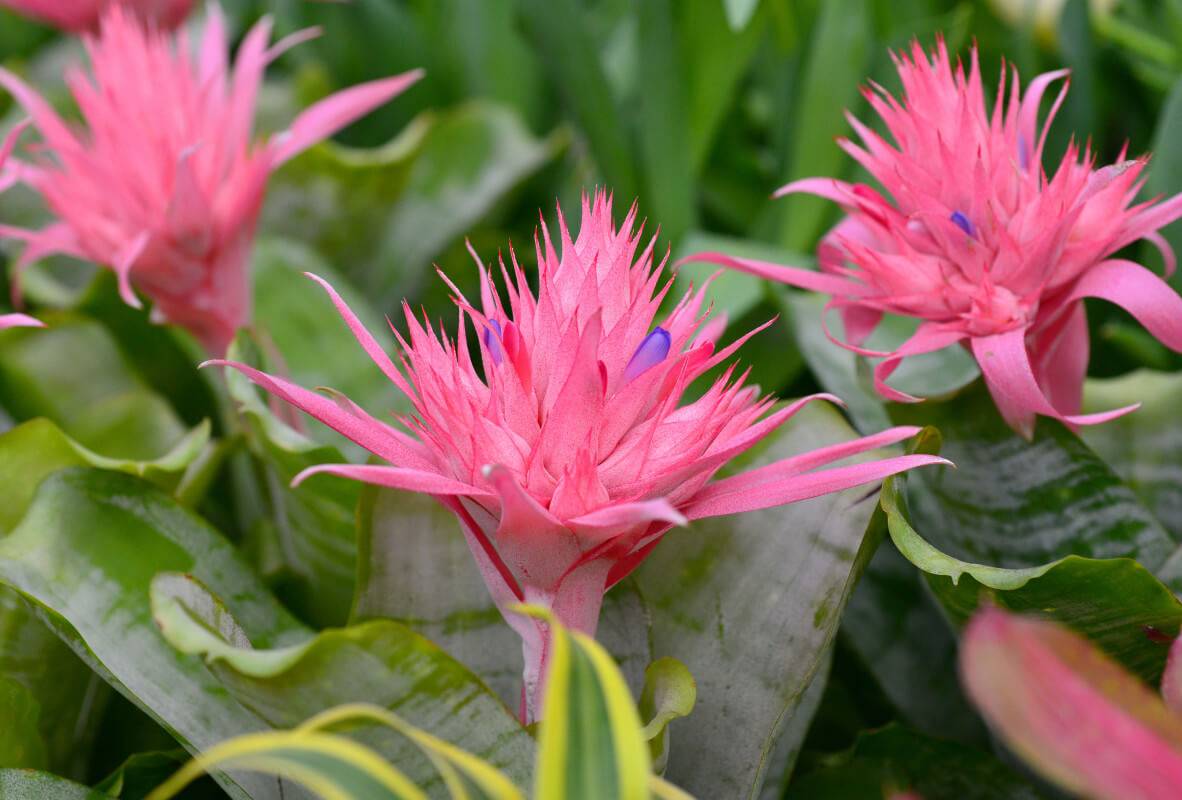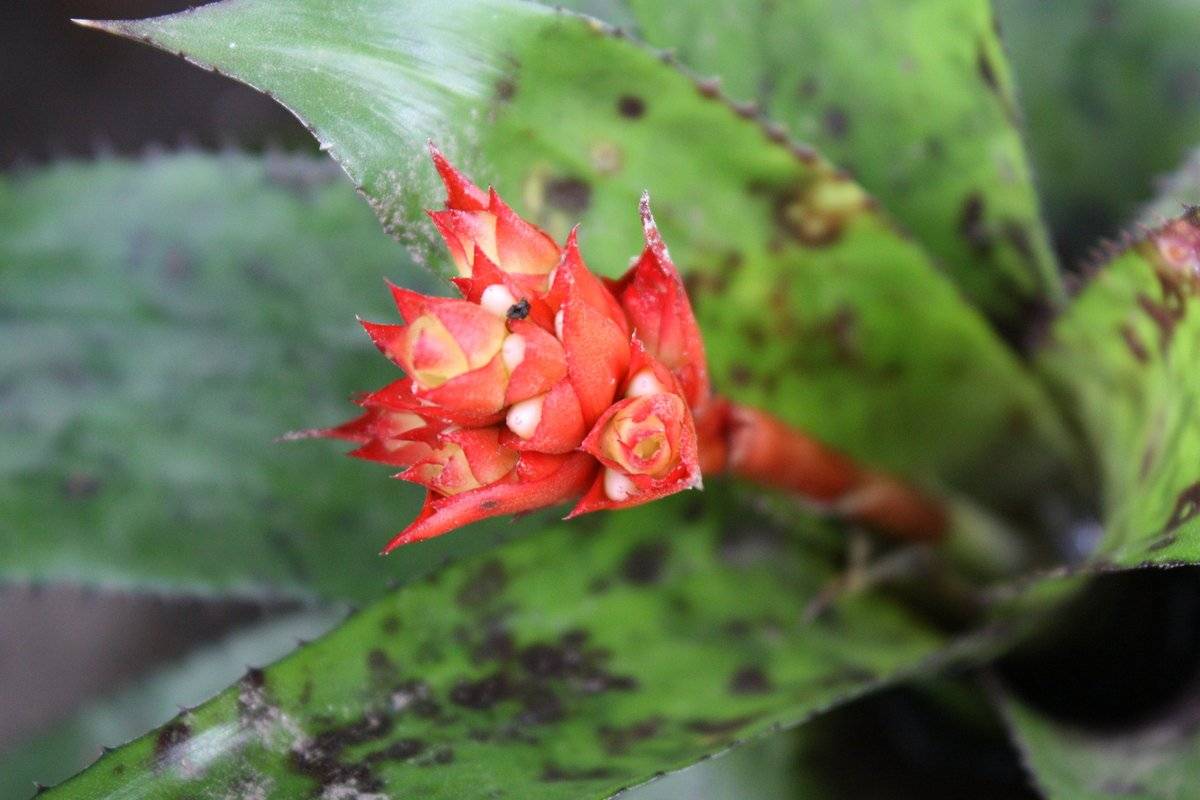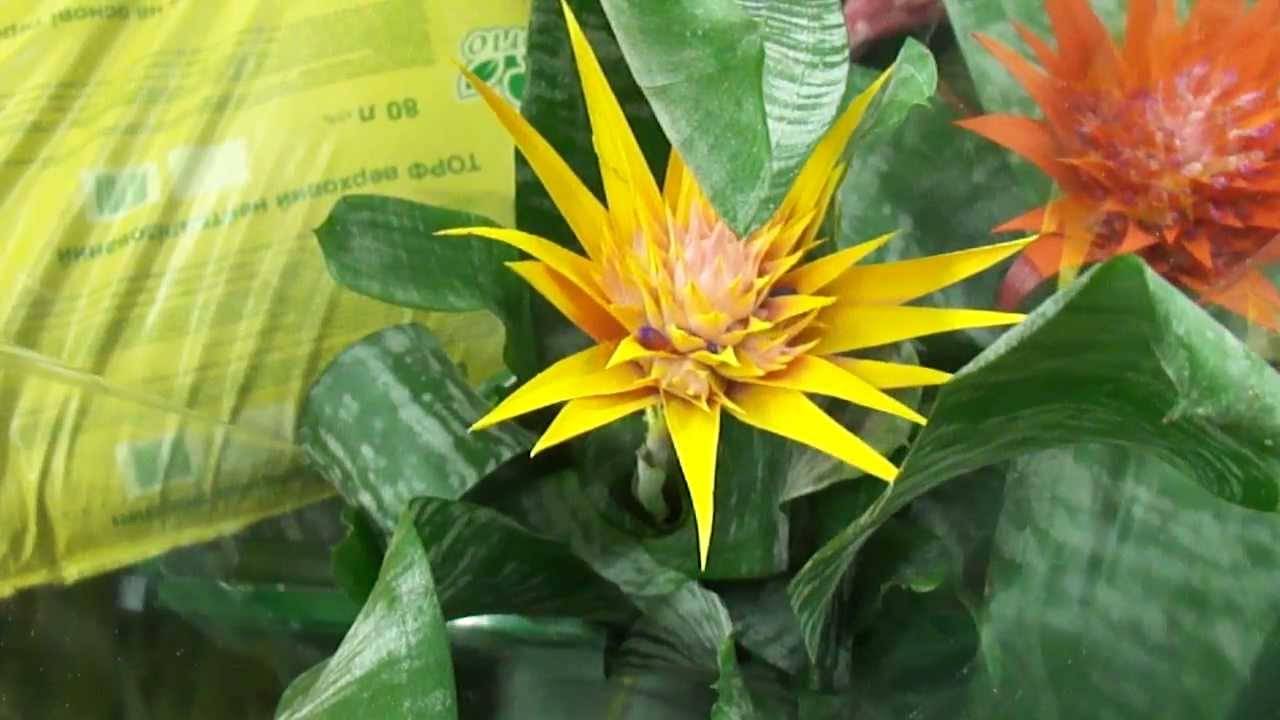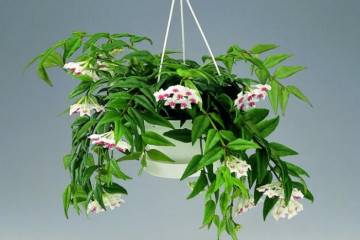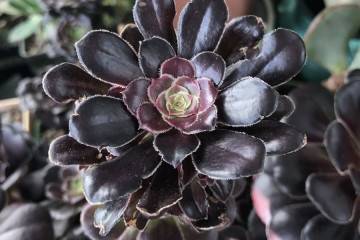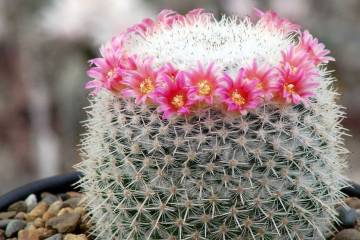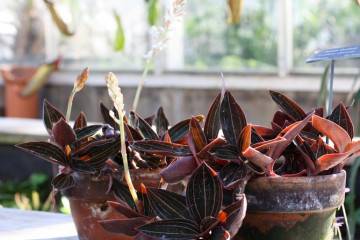Ehmeya - home care, indoor types
Content:
Indoor plants decorate the interior, create coziness in the house and cheer up. Ehmeya is considered one of these vases. Caring for a plant at home does not require much effort, but it is still worth following certain rules.
The origin and appearance of the plant
Ehmeya came to us from Latin America. The plant is referred to as epiphytes, its terrestrial species are not often found. It grows in tropical rainforests. Ehmeya is found on snags, trees, sometimes on rocks and stones.
The plant has a short stem, wide and elongated leaves with thorns at the edges, an underdeveloped root system. Inflorescences can be spike-shaped, in the form of a panicle or a head. The flowers are purple, blue and red, and the pointed bracts are pink.
Types and varieties for indoor breeding
The genus Ehmeya is very diverse, several dozen species belong to it. The following is a description of the varieties that are best suited for home growing.
Ehmea striped or fasciata (Aechmea fasciata)
Its belt-like greenish-gray leaves with marble-white stripes are collected in rosettes, and pink inflorescences are pyramidal in shape. It is better to choose partial shade for her. Caring for striped echmea at home consists in watering and feeding. Watering is carried out at the root as the earth dries up. Fertilize by spraying with low-concentration bromeliad solution.
Ehmeya Primera
Rigid and curved leaves adjoin each other, plant height reaches 65 cm. The example has bright pink bracts and red-purple flowers. Requires regular watering with filtered water. In the summer, moisturize the root and rosette. Top dressing is carried out using a spray bottle, spraying the leaf plates with a special solution.
Ehmeya Shining
The plant has a belt-like green leafy rosette, leaves rounded with denticles along the edge, and also pink bracts and coral-red flowers. The inflorescence can contain up to 100 flowers. Aechmea fulgens is photophilous, in winter the optimal temperature for it is +18 degrees, and in summer - + 20-27 degrees. In hot weather, the water in the leaf funnel should be constant. During the flowering period, fertilizing is required twice a month.
Ehmeya red matte (Aechmea miniata)
This variety has green and tapered leaves with scales on the surface and thorns at the edges. They are assembled into a funnel-shaped socket. During flowering, a red peduncle with a pyramidal inflorescence appears from the outlet. The main advantage of matte red echmea is long flowering.
Ehmea Weilbach (Aechmea weilbachii)
The length of its soft-skinned green leaves reaches 50 cm. At the base, they are painted in a copper-red hue and do not have prickly edges. The flowers of the echmea are lilac-blue.An erect peduncle grows up to 50 cm in height.
Ehmea two-row (Aechmea distichantha)
This plant has a spreading deciduous depression, which can reach 1 m in diameter. The leaves are green and elongated, the flowers are purple with bright red bracts.
Ehmea curved (Aechmea recurvata)
The leaves are narrow and long - up to 40 cm, in width - up to 1.5 cm. The bract is red. The inflorescence is capitate and up to 20 cm long. Leaves with pointed edges form a tubular rosette.
Ehmea shaggy (Aechmea comata)
Echmea shaggy has yellowish flowers with reddish bracts. The shape of the inflorescence is spike-shaped. Leaves are belt-shaped, with spiny edges. It blooms in winter, has another name - Linden's ehmeya.
What is needed for planting ehmei
Ehmeya is a shallow rhizome plant, so it needs a wide pot with drainage holes. Its volume should be slightly larger than the volume of the root system. Ehmeya loves warmth and moisture, so it can be grown in a plastic pot.
The soil can be picked up at the store. It should be loose soil that allows water and air to pass through. You can make the substrate yourself using:
- chopped sphagnum;
- pine bark;
- coarse sand.
All components should be taken in equal amounts. Additionally, you can use horn shavings and peat for better structure.
Step-by-step planting process:
- A thick drainage layer is laid at the bottom of the container.
- Soil is poured on top. They should fill the pot up to half.
- The leaves must be carefully collected at the base and the plant removed from the old container.
- The flower is lowered into the prepared pot, the rest of the earth is poured out on top.
- The transplanted plant should be placed in a place where the sun does not reach.
Ehmeya: home care and reproduction
The flower can be propagated using seeds or by planting shoots.
Echmea propagation by shoots
A faded echmea sprouts. But they cannot be transplanted immediately. They should grow up to 15 cm and take root. The process of propagation by shoots is as follows:
- the ehmey must be taken out of the pot and the children with the roots must be separated, the cut site must be disinfected;
- a container with a diameter of 8-9 cm is filled with a mixture of coarse sand and peat;
- the shoots are placed in the soil. The container is covered with foil and placed in a warm and bright place.
When the shoots are well established, they can be planted in separate pots and cared for as an adult plant.
Growing from seeds
This is a difficult and less popular way of breeding echmea. When using it, the plant may lose its varietal characteristics. The breeding process is carried out in the following sequence:
- Seeds are sown in a container with peat at a shallow depth.
- The container is covered with polyethylene, periodically the film must be removed so that the soil can be ventilated and moistened.
- After 3 months, the seedlings are planted in separate pots with leafy soil.
- After a year, the seedlings are transplanted into the soil for adult plants.
The optimum temperature for seeds is + 22-24 degrees, and for seedlings - from +20 to +22 degrees.
Echmea care
The plant blooms from May to October and only once. But even with short-term flowering, watering should be regular. In addition, the plant needs to be fed. Fertilizers are applied from March to September.
In winter, the plant rests. At this time, buds are formed. During the rest period, the temperature in the room should not fall below +16 degrees.
Why ehmeya does not bloom at home
There are several factors that have a detrimental effect on the plant and prevent flowering:
- Do not expect flowers ahead of schedule. A seedling grown from seeds will open only for 5 years, and a planted shoot - after 3 years. It is impossible to make ehmeya bloom earlier.
- Unfavorable temperature conditions. In summer, the flowerpot should grow at a temperature not lower than + 22-26 degrees; in extreme heat, frequent spraying is required. The bud is formed in the autumn-winter period, therefore coolness is necessary (+ 17-21 degrees).
- Lighting. The plant requires constant light, but should not be exposed to direct ultraviolet rays. The sun can cause burns and, as a result, there will be no bloom.
Ehmeya flower is a beautiful and rather unpretentious plant. The only drawback is short-term flowering. In any case, you should know how to care for an exquisite ehmeya flower and why it does not want to bloom.
